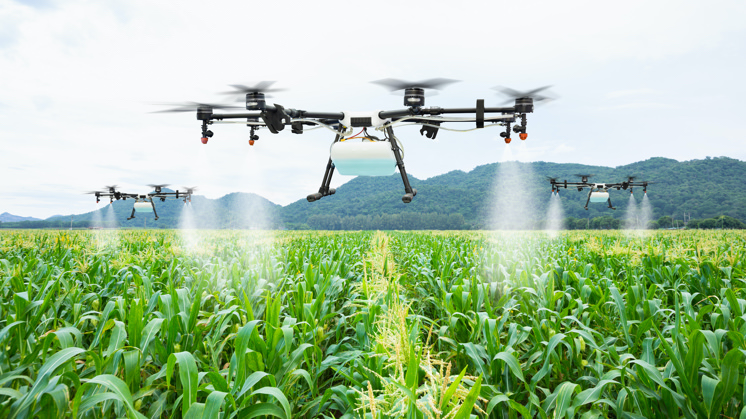The use of the Internet of Things, sensors, positioning systems, robotics, and artificial intelligence on your farm is referred to as “smart agriculture.” an emerging idea known as “smart farming” refers to managing farms utilizing IoT, robots, drones, and AI to improve product quality and quantity while minimizing the need for human labor. The ultimate objective is to maximize the use of human labor while raising the quality and quantity of the crops.
The use of the Iot solutions, sensors, positioning systems, robotics, and artificial intelligence on your farm is referred to as “smart agriculture.” The ultimate objective is to maximize the use of human labor while raising the quality and quantity of the crops. IoT in agriculture is not only solving time-consuming and tedious tasks that are frequently involved, but it is also fundamentally altering how we view agriculture. However, what exactly is an intelligent farm? Here is an article on what smart farming is and how it is transforming the agricultural industry.
What is Smart Farming?
In order to increase production quantity and quality while minimizing environmental impact and maximizing resource efficiency, smart farming uses new technologies that emerged at the start of the Fourth Industrial Additionally, increased global food security will be possible thanks to the application of technology in agriculture and cattle production.
Importance of Smart Farming
In smart agriculture, you may produce fruits, vegetables, and flowers by utilizing a nutrient solution that includes the minerals they require in place of soil. This will allow plants to readily and immediately access the nutrients they need, which will result in much more effective and fresher production. Furthermore, you may increase output productivity using smart farming. You obtain the exact yield with each harvest when you use the nutrient solution that contains the necessary amounts of light, water, and minerals, and your production expenses go down as a result of the increased efficiency. You don’t require purifying procedures because none of this production uses dirt. There is no requirement for purifying methods, which is another significant benefit of intelligent agriculture. Smart agriculture stops the spread of weeds, insects, and illnesses because the procedure is carried out indoors. You won’t need chemical additions like pesticides, the environment won’t be harmed, and your expenses will go down. There is also less labor required compared to traditional agriculture because weeding and digging are not necessary.
Is agriculture’s future in intelligent farming?
The “third green revolution,” which refers to the integrated use of information and communications technology, is being paved over by smart farming and IoT-driven agriculture. This includes gadgets like robots, uncrewed aerial vehicles (UAVs), geo-positioning systems, IoT sensors and actuators, and precise equipment.
IoT solutions improves the capacity to predict production outcomes, which helps farmers better plan and distribute their produce. This helps decrease production risk in the agricultural industry. In addition, service providers and mobile operators are modernizing their network infrastructure in a number of industries, including agriculture, bringing network resources to the edge, and integrating far distances through technologies like small cells and massive MIMO in preparation for the 5G roll-out.
Benefits of Smart Farming
Agriculture and livestock farming benefit from the use of the technology mentioned above. Consider a few of these advancements:
- Increase in Production: Production has increased as a result of process optimization in agricultural and animal management.
- Helps in Water Saving: Save water by watering only when required and for the appropriate amount of time using weather predictions and sensors that assess soil moisture.
- Better quality: Analyzing the effectiveness of the tactics used in relation to the quality of the product acquired enables changes to be made that will improve the quality of the ensuing output.
- Cost savings: Automation of the planting, treating, and harvesting processes in agriculture results in a reduction in the usage of reso
- Animal health and pest detection: By identifying pest infestations in crops or diseases in animals early on, the impact on productivity may be reduced, and animal welfare can be enhanced.
- Better sustainability: Reducing the environmental effect by conserving resources like irrigation water and maximizing the use of the land.
Conclusion
The use of information and data technology to optimize sophisticated farming systems is referred to as digital farming or intelligent farming. All agriculture activities and individual machinery are involved. It’s important to note that IoT-based smart agriculture doesn’t just focus on large-scale farming operations; it can also benefit new agricultural trends like organic farming and family farming, which includes breeding specific cattle and growing distinct cultures, preserving specific or high-quality varieties, and enhancing highly transparent agriculture to consumers, society, and market consciousness.


